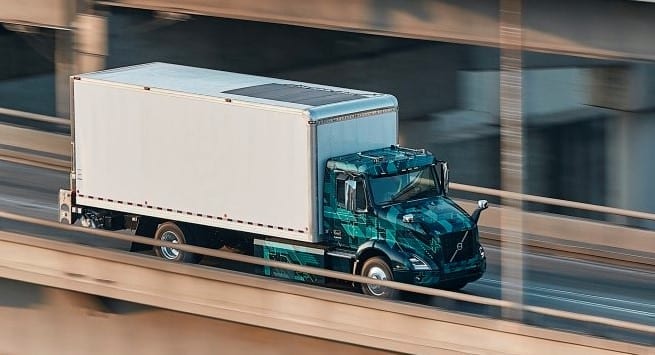Trucking has, like other parts of the American economy, taken a punch from COVID. April’s job losses in the sector – estimated at 88,000 or 5.8% of the workforce per the Bureau of Labor Statistics (BLS) – were enough to eliminate all job gains in trucking since September 2014. Total separations in the larger BLS umbrella category of Transportation, Warehousing and Utilities in March and April topped 900,000. And while BLS reported net job gains of 8,100 in trucking for June, there’s still a lot of ground to regain for the industry. Short version – from February to July, total trucking employment was down about 6%.
There is good news, though, some hiding in plain sight on the calendar. As summer winds down, the pre-Christmas shipping season winds up. And as the retail rush begins, lower overall capacity means shippers have been able to boost rates. Spot dry rates have risen from around $1.35 in May to more than $2.00 in August. FTR’s Trucking Conditions Index spiked from a record low of -28.66 in April to a 11.35 in June, the highest reading in a decade. Better yet, net trailer orders in July were up 84% YOY, with 173,000 units ordered in the preceding 12 months. But the sector’s long-term issues remain – driver shortages, infrastructure, and trade friction among them. And hanging over everything is the uncertain direction of the American economy, driven by consumer sentiment, intertwined with an ongoing pandemic.
In today’s uncertain conditions, will trucking fleets still move forward with plans for clean-fuel rollouts? We suspect the answer is yes.
Will Fleets Still Move Forward with Clean Fuels?
In these uncertain conditions, will trucking fleets still move forward with plans for clean-fuel rollouts? We strongly suspect the answer is “yes”, for several reasons.
For starters – fuel prices. Diesel costs and driver pay have duked it out for pole position as trucking’s single biggest cost for years and recent data shows more of the same. Diesel prices rang in the new year at about $3.08, nationally averaged. EIA data shows that as the pandemic grew, prices slumped to around $2.39 during the first week of May, and crept higher as June began. These are low prices – retail diesel was about a buck higher as recently as fall 2018.
Propane, biodiesel and liquefied natural gas are all viable alternatives to diesel. But to date, the most common alternative fuel for heavy freight transportation is compressed natural gas (CNG). There are trade-offs, but slightly lower fuel efficiency is offset by the elimination of diesel exhaust fluid (DEF). Financially, switching to CNG can make good sense. Even at today’s relatively low diesel prices, a substantial gap remains between costs for the two fuels. Our regional price reporting showed CNG as high as $2.29 and as low as $1.39 in April. And fuel savings of $0.50 or even $0.35 per gallon matters to freight fleets. Fleets using CNG in quantity typically work with utilities to set contract prices far lower than retail prices sampled here. Finally, utility-supplied CNG prices remain stable compared to wild swings in diesel costs, which matters greatly to shippers planning years in advance.
Financially, switching to CNG can make good sense. Even at today’s low diesel prices, a gap remains between costs for the two fuels.
Quick example: a diesel Class 8 tractor costs about $120,000, a CNG unit about $170,000. Now consider annual long-haul mileage – 90,000 miles/year is reasonable. Class 8 trucks average between five and eight miles per gallon. Take the midpoint for this example – 6.5 mpg, for annual consumption of 13,846 gallons. Assume $0.40 savings per gallon for CNG over diesel, and annual fuel savings are $5,538, for a nine-year payback. At $0.65 savings per gallon, payback drops to just over 5.5 years. Even with today’s relatively low diesel prices, there’s still a financial case for switching.
Renewable Natural Gas on the Rise
Another clean-fuel option continues to grow rapidly – renewable natural gas. RNG is pretty much the ultimate low-hanging fruit. Plenty of human activity involves rot. That rot – in landfills, in large-scale dairies and feedlots or at water treatment plants – produces methane that can be captured with fairly low-tech methods. RNG growth has been huge, about 291% in the past five years. Popular with long-haul and local heavy fleets, it accounts for an estimated 39% of all gas used by America’s 175,000 CNG trucks. UPS has already committed, as of May 2019, to purchase 170 million gallon-equivalents of RNG to fuel its growing fleet of 6,000 natural gas trucks. As a renewable fuel, RNG users can benefit from federal credits under the federal Renewable Fuel Standard, and a Wisconsin RNG supplier is now working to create a tradable equivalent to the Renewable Energy Certificate (REC). Rebates and the possibility of a growing market in RNG credits may well make the fuel more attractive. The very real possibility of RNG’s low-carbon certification helping to boost carriers’ sustainable credibility almost certainly will.
RNG growth has been huge, about 291% in the past five years.
The Growing Environmental Imperative
Which brings us to an even bigger long-term incentive for cleaner fuels – environmental performance. Clean fuel commitments by transportation companies may come and go (or be delayed), but air quality regulations will remain as climate mandates expand. These long-term concerns are driving the next likely alt-fuel showdown in the heavy-duty market – natural gas vs. electric. And as of June 25th, 2020, that showdown is now officially on in America’s most populous state – California.
The California Air Resources Board (CARB) June 25th announcement to adopt the Advanced Clean Trucks (ACT) rule was a big deal. The Board voted unanimously to require that manufacturers sell zero-emission medium- and heavy-duty trucks in the state beginning with the 2024 model year. The rule requires that 5-9% of applicable truck sales be zero-emission (that is, electric or fuel cell) to start, but that percentage will rise to 30-50% by 2030. The long-term goal – 100% ZEV trucks by 2045 “where feasible.” With more than 10% of America’s population, and with its status as the 5th largest economy in the world, California is a market that no major freight company can afford to ignore – or defy. It’s also home to America’s toughest air quality standards, for a reason. 95% of the state’s residents live in urban areas, 7 of the 10 densest cities in America are located in the state, and California’s cities are some of the most auto-dependent in the country.
The CARB ACT rule will require manufacturers to sell zero-emission medium- and heavy-duty trucks in California by 2024.
Renewable Natural Gas vs Battery Electric
For now, natural gas trucks can meet or beat current California standards. Cummins, which designs and builds a substantial chunk of large CNG engines, already sells gaseous fuel engines that produce 90% less smog-forming NOX than EPA rules mandate. For now, electric heavy truck costs remain nearly prohibitive for large-scale deployments (on the order of $250,000 – $300,000 per Class 8 unit). But we’re no longer in prototype/test mode. A number of OEMs are already rolling out or preparing to sell battery-electric trucks. Initial large-scale deployments are likely to be in last-mile or fixed route cycles. But as battery costs continue to fall, long-range heavy EVs hit the road, and mandates begin to bite, these two competing fuels – natural gas (potentially boosted by added RNG supplies) and increasingly, electricity, will likely be the main contenders as freight transportation moves in a cleaner direction.
If you are interested in reducing your costs to access cleaner, alternative fuels and new transportation technologies – or just want to learn more – the Clean Cities Program is ready to help. Nearly 90 Clean Cities Coalitions work in cities across America. They provide funding, technical assistance, education and partnership opportunities to fleets, businesses and governments from coast to coast. It’s all part of our mission to enhance America’s energy and economic security, while saving our stakeholders money and improving our shared environment.



